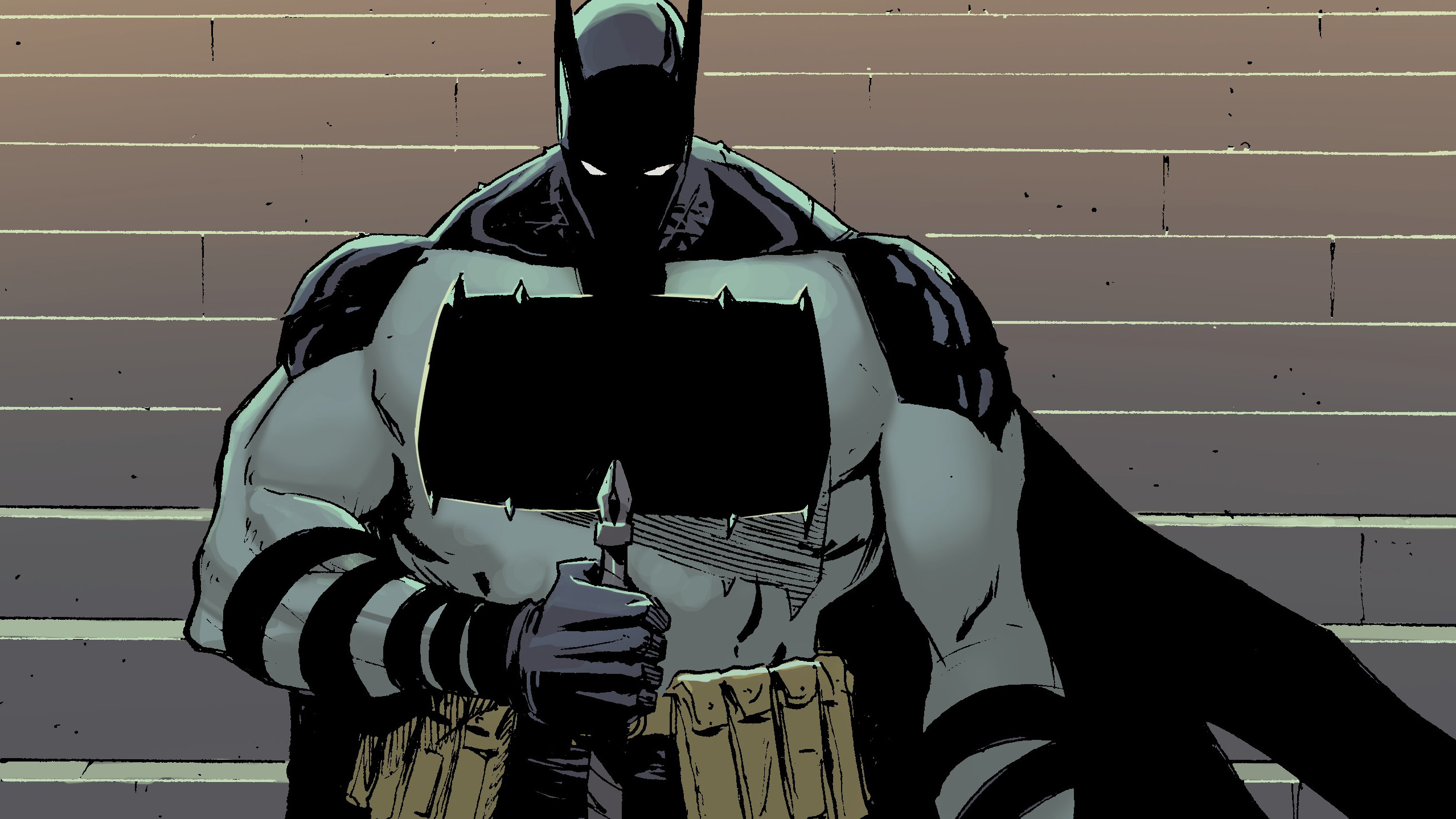
After helming one of the all-time great Batman runs with Greg Capullo, award-winning comic book creator Scott Snyder is returning to DC Comics to introduce a very different kind of Dark Knight in the new series Absolute Batman.
Set in the newly-minted Absolute Universe, featuring bold new visions of DC's biggest icons, Snyder is teaming up with acclaimed artist Nick Dragotta to create a radically new take on the Caped Crusader that's already garnering plenty of internet buzz for his appearance. In the Absolute Universe, Bruce Wayne isn't a billionaire playboy, but rather a civil engineer in Gotham City whose moral crusade places him against the authority and privileged figures oppressing Gotham's masses.
In an exclusive interview with Newsarama, Absolute Batman writer Scott Snyder and artist Nick Dragotta detail the origins of their buffed-up Batman for the people, explain the core ethos behind Absolute Batman, and tease what fans can expect when DC All In Special and Absolute Batman launch this October.
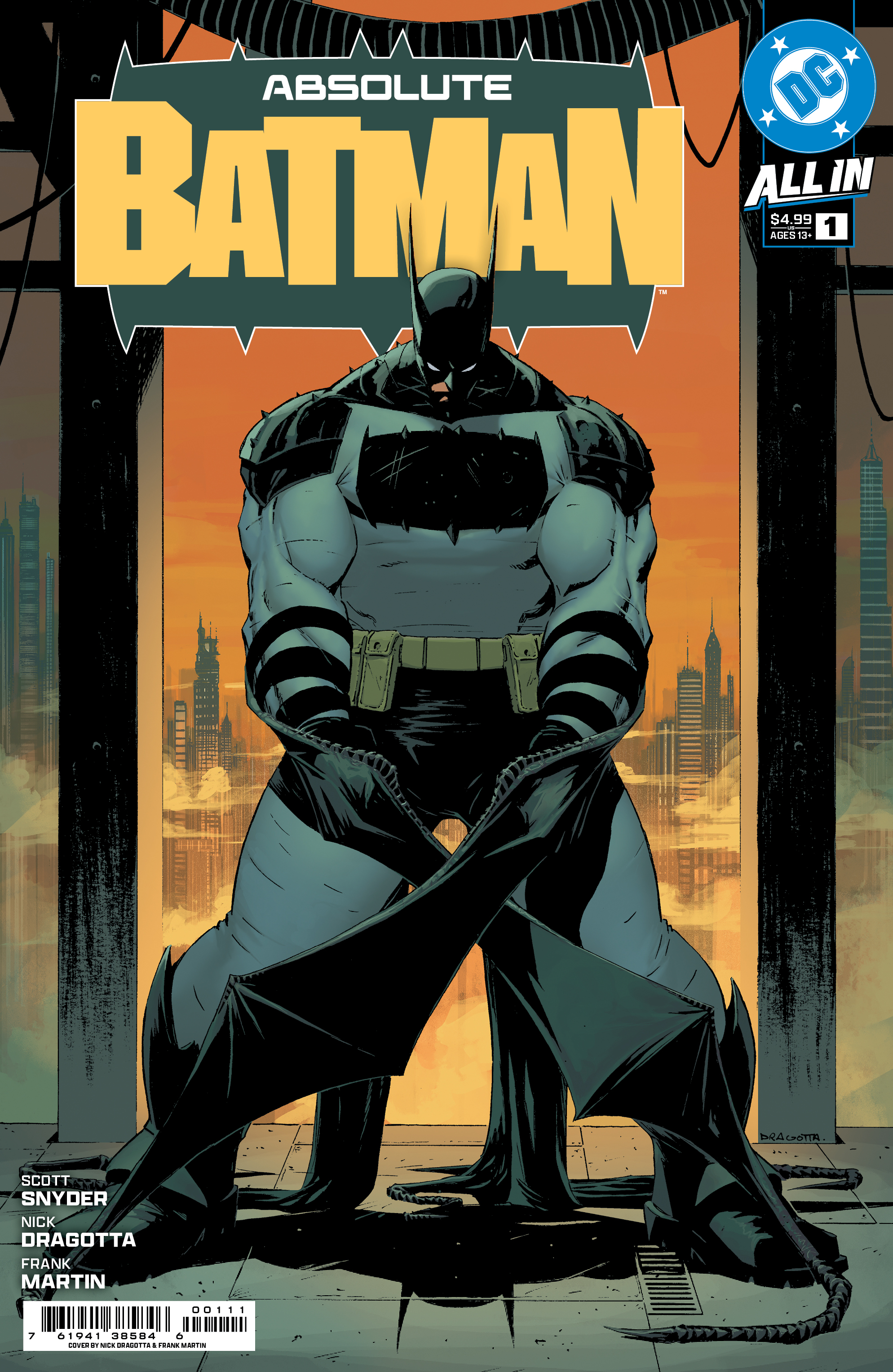
Newsarama: Scott, Nick, There's been plenty of buzz online about how jacked this version of Bruce Wayne is. Could you talk us through your thought process on making the Absolute Batman such an absolute beast?
Scott Snyder: When I was first thinking about doing the book he just appeared to me in my head as huge. It just felt like I should try to go with my gut. It was always Greg Capullo who is like "the first idea is the best idea." I try to live by that and, with this, he really just emerged in my mind as a Dark Knight Returns-sized Bruce, but young and fast.
It was exciting to me because he comes up in this universe without any resources – he comes up blue-collar, grows up in Crime Alley, he's friends with a lot of the characters who are his villains in the main universe. If we were going to invert the whole mythology, it felt like one thing he could be was giant because he doesn't have to pretend to be somebody in public.
Bruce Wayne is just a guy on the street. As such and as somebody who works different jobs as a civil engineer, working in the power plants and sewers, he can be a beast. We wanted him to feel like a primal force, just this unstoppable wall coming at you to level anyone in his way. He had to have that ferocity and brute strength. He's super-smart also, but he had to have that energy where you'd have to go "My god, that guy is big!"
Get the best comic news, insights, opinions, analysis and more!
Nick Dragotta: My job, as the artist, is to come up with something new and different, but make him instantly recognizable as Batman. The challenge is there is 80 years of Batman history and we want to create a new Batman for this day and age. That's a real design challenge. I'm so beholden to the history that I did not want to mess with the silhouette. Scott laid it down and said "He's going to be the biggest Batman that we've ever seen." I drew him big on the first attempt and Scott was like "We've got to go bigger."
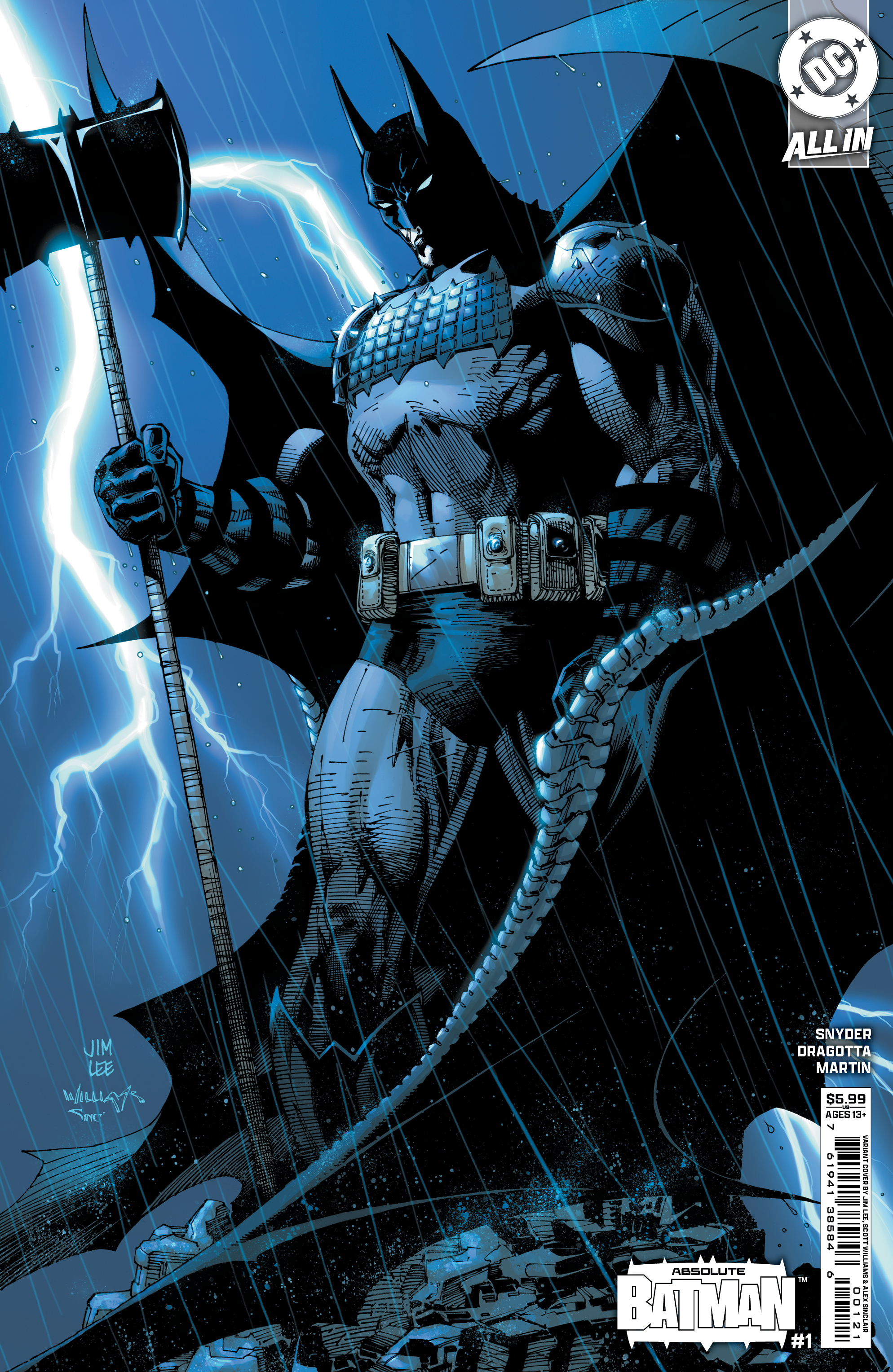
And how did you come up with the new logo?
Snyder: All credit to Nick in terms of the logo itself. We wanted something that was equally bold, that wasn't a bat you've seen a hundred times, but something you'd see and be like "You better have some muscle behind that to pull that off." I just adore what Nick came up with. I'd be very surprised if that shirt doesn't sell out at NYCC.
Dragotta: I personally love the emblem If you look at the design, it bows on the edges and looks like it's about to burst. We knew it was right because that's our character, that's this Bruce. It also is a utility, it is a tool. When you see him use it, you'll understand what it is and why it does what it does. We did our job because people are talking, and I can't wait to get to the shirt.
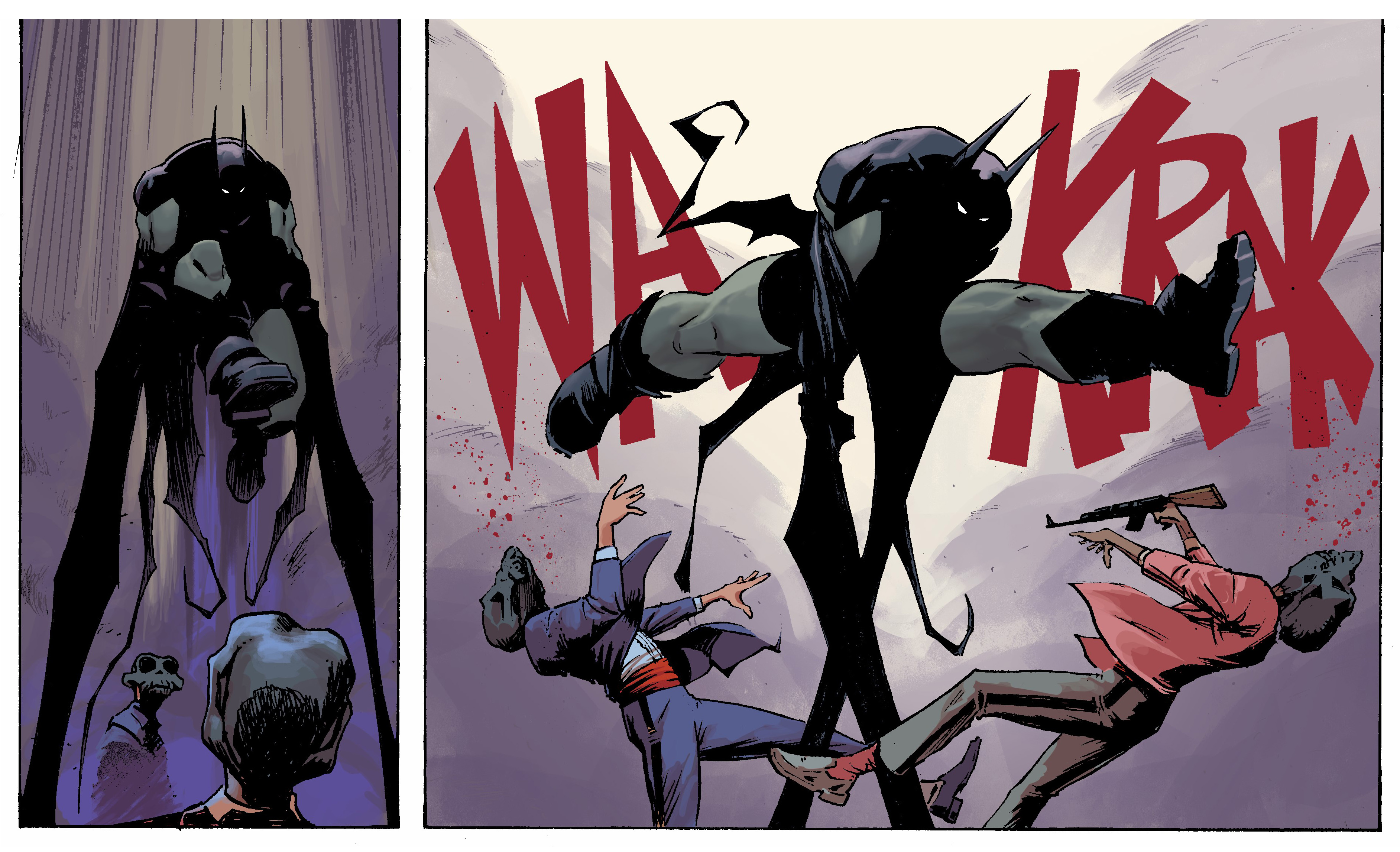
Scott, this is the second time you've built a Batman from scratch after Batman: Zero Year. How is Absolute Bruce different from that Batman?
Snyder: The thing that I've always loved about writing classic Bruce is that he's in conversation with his own position in society all the time. He's an outlaw, but he's also the system. We tried very hard to have Bruce Wayne always be very civic-minded and, by day, do the things that he could with his money and, by night, operate as Batman. But there's also always a conflict there because he is order and the system, and his villains represent chaos and anarchy. In a lot of ways, it's easy to root for him and, at other times, it can be a bit queasy and problematic.
With this, it wasn't just a matter of Batman being poor and his villains being rich. It's a complete inversion and reconstruction of the mythology. It's not just Bruce without resources, it's Bruce as chaos and anarchy, and the more villainous characters as order, the system, and the guardrails that hold things in place that you want to knock down. In that way, it gives you this whole fresh outlook. If Bruce is the fly in the ointment, what does that mean for who his allies are? What does that mean for how he fights, his costume, his Batmobile. What is a Batcave if you don't have the resources?
There are similarities: he's an idealist, he doesn't kill, a trauma in his youth becomes the fuel for him to want to make the world a better place, which is the core conceit of Batman for me. Everything outside of that is window dressing. Outside of that, they're wildly different characters. I don't know if they'd get along at all. That's the fun part of it. They'd eventually get along but they'd probably fight for a bit first.
And how has it been writing for him?
Snyder: This Batman is so effortless to write, this Bruce is so easy. I wrote Batman before about the things I was afraid of about myself and the world that I saw and we lived in as adults. This Batman is very much made to make my kids feel brave in the face of the things that they're afraid of. He's designed for them, in a world where generational billionaires aren't so cool, where it feels like a cataclysm is around the corner, and everything is divisive and hollowed-out. He is the young, idealistic beast that's like "We can do something about this."
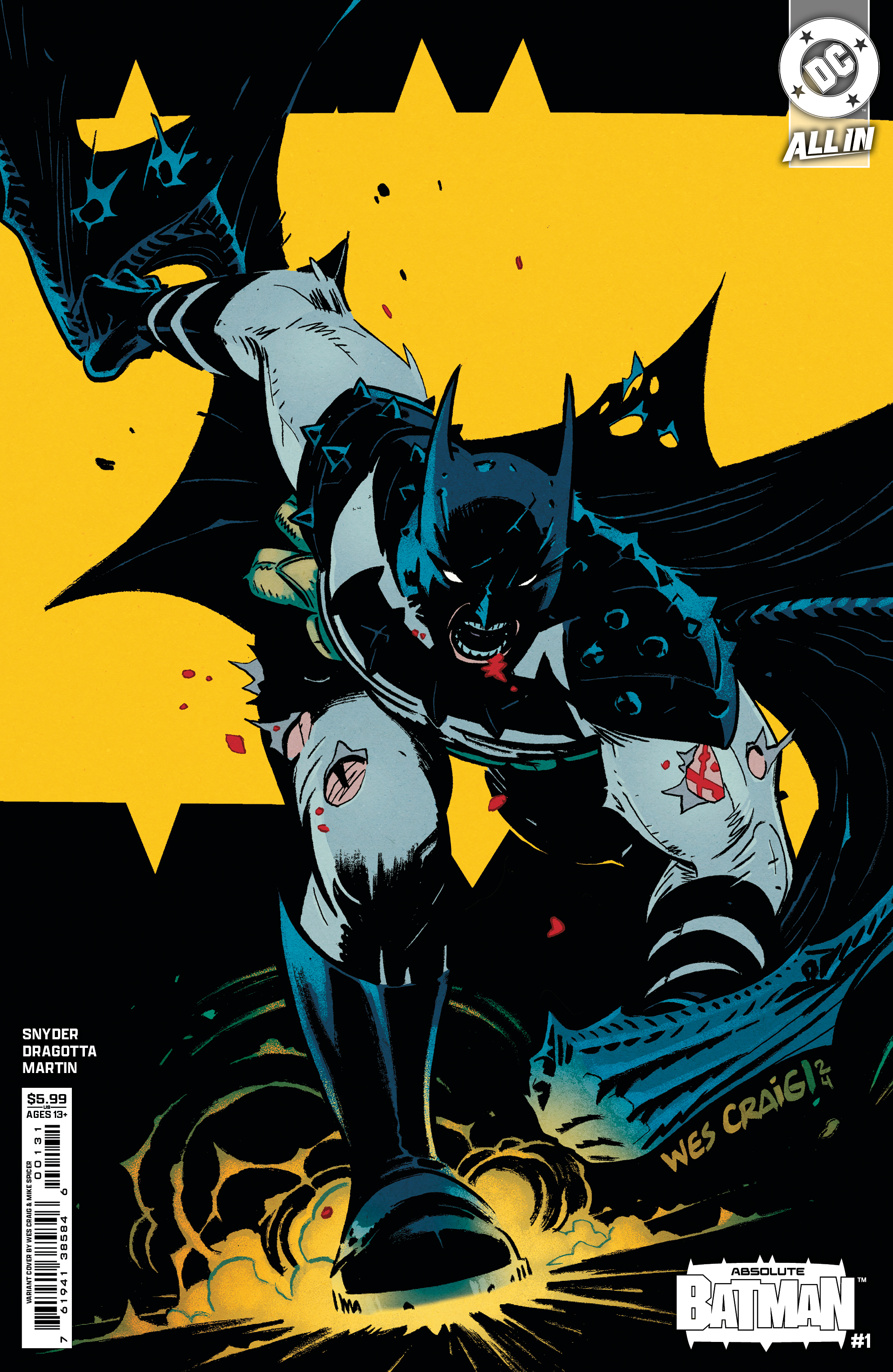
Nick, how did you want to draw this streetwise, raw-around-the-edges Batman with how he carries himself and fights?
Dragotta: He's a hulking Bat that has the agility of an acrobat. There is a juxtaposition there, but I think that's what really makes him work. When you see him move, I want to get across that speed and some ambiguity in it too. There's some really violent fight scenes in this and Scott and I are really pushing what we can get away with here. When you see the first issue, you'll be like "Wow, they got away with something!" [laughs]
It's just speed with speed lines, silhouettes, blood splatter, and just good design. I want to leave a lot to the readers' imagination. Scott and I live close by, so Scott and I will meet up at his place and I'll share all these drawings. We'll just start talking and ideas lead to new ideas. We'll see a drawing, Scott will say something, and that leads to something else. We get these gestures of what he could do and I lay down these sketches. You just want to capture that and leave the rest to the readers' imagination. That's my goal, to not go too far and explain everything, but have it be believable and just imaginative and cool.
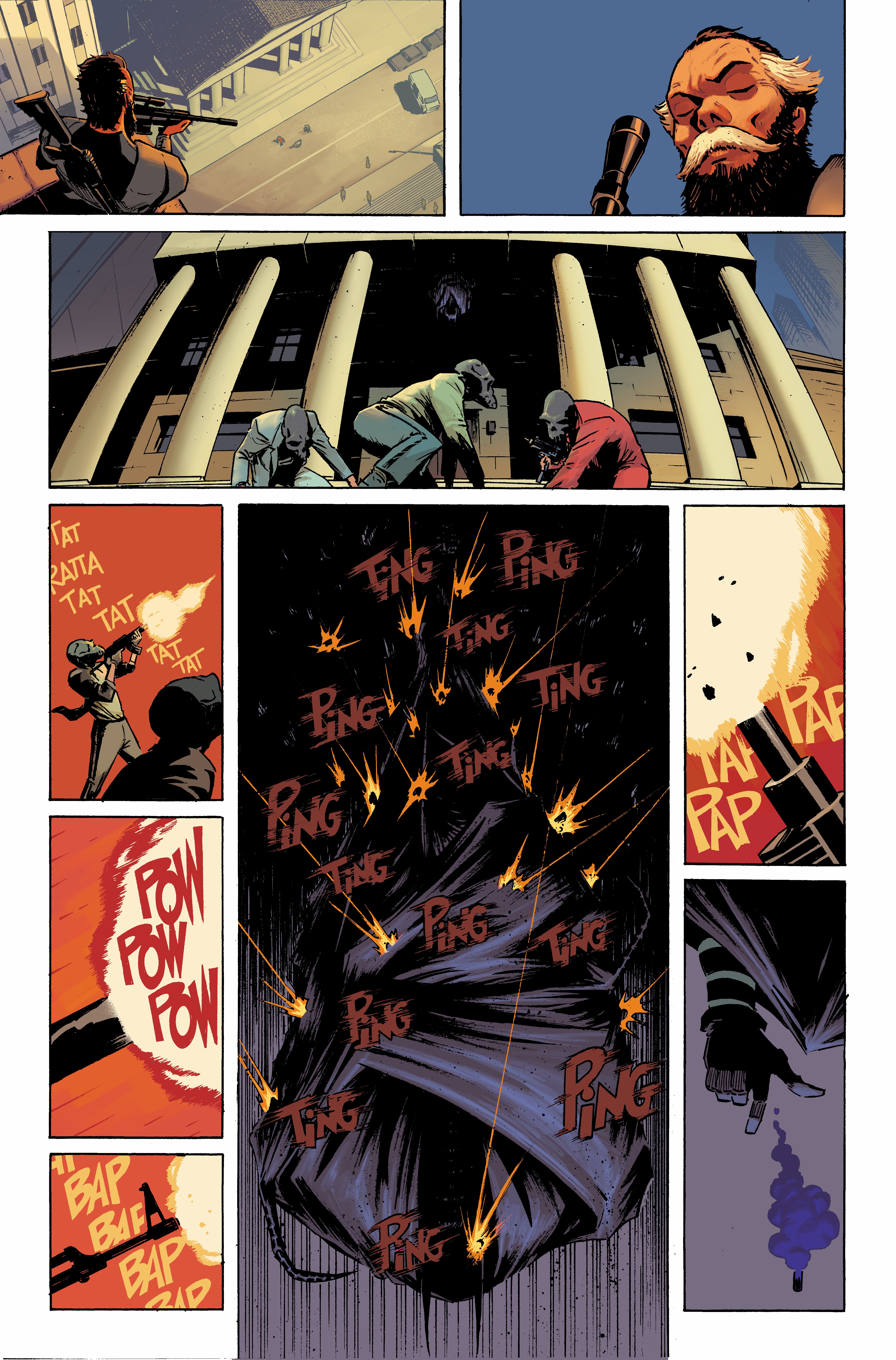
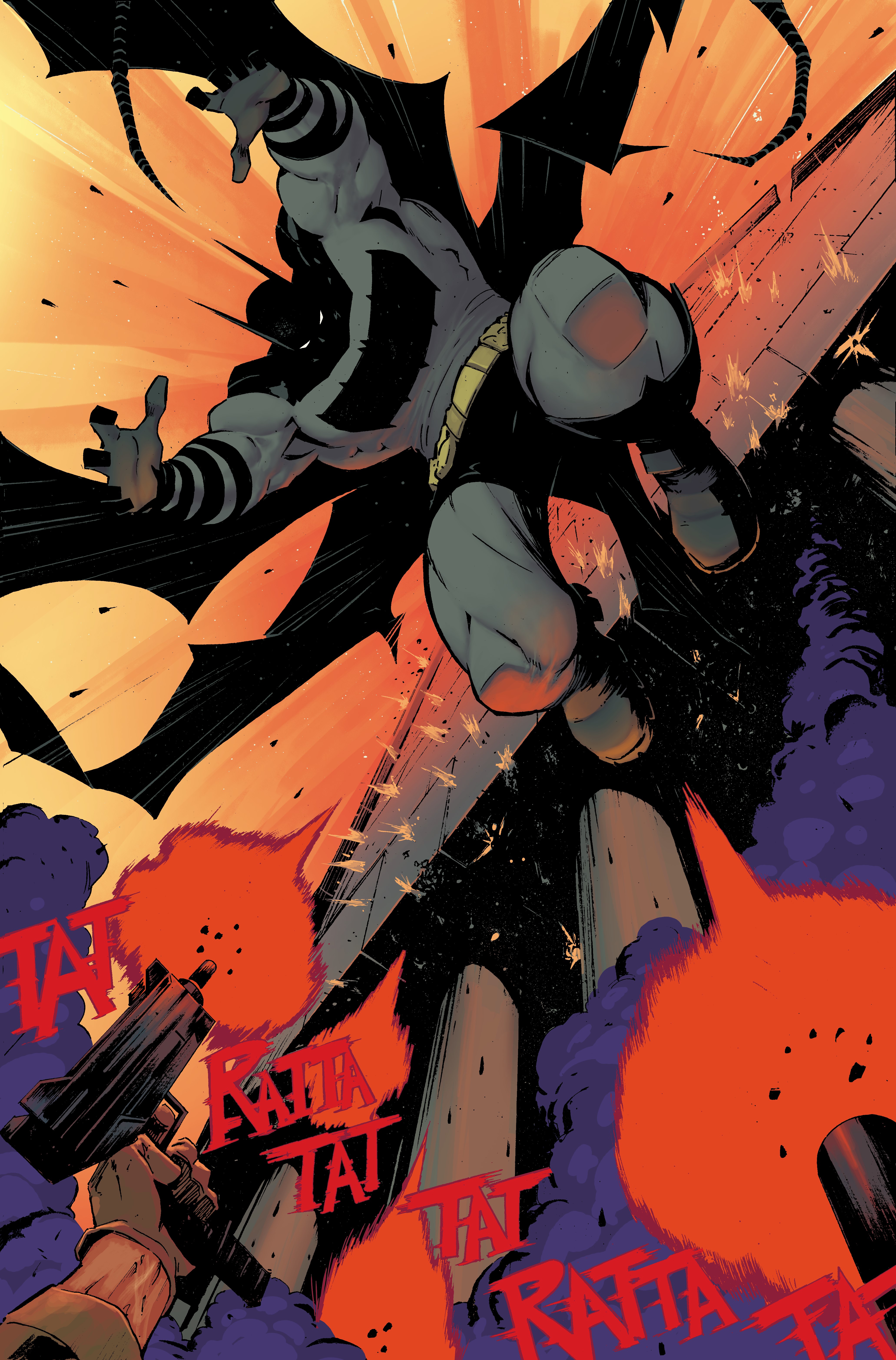
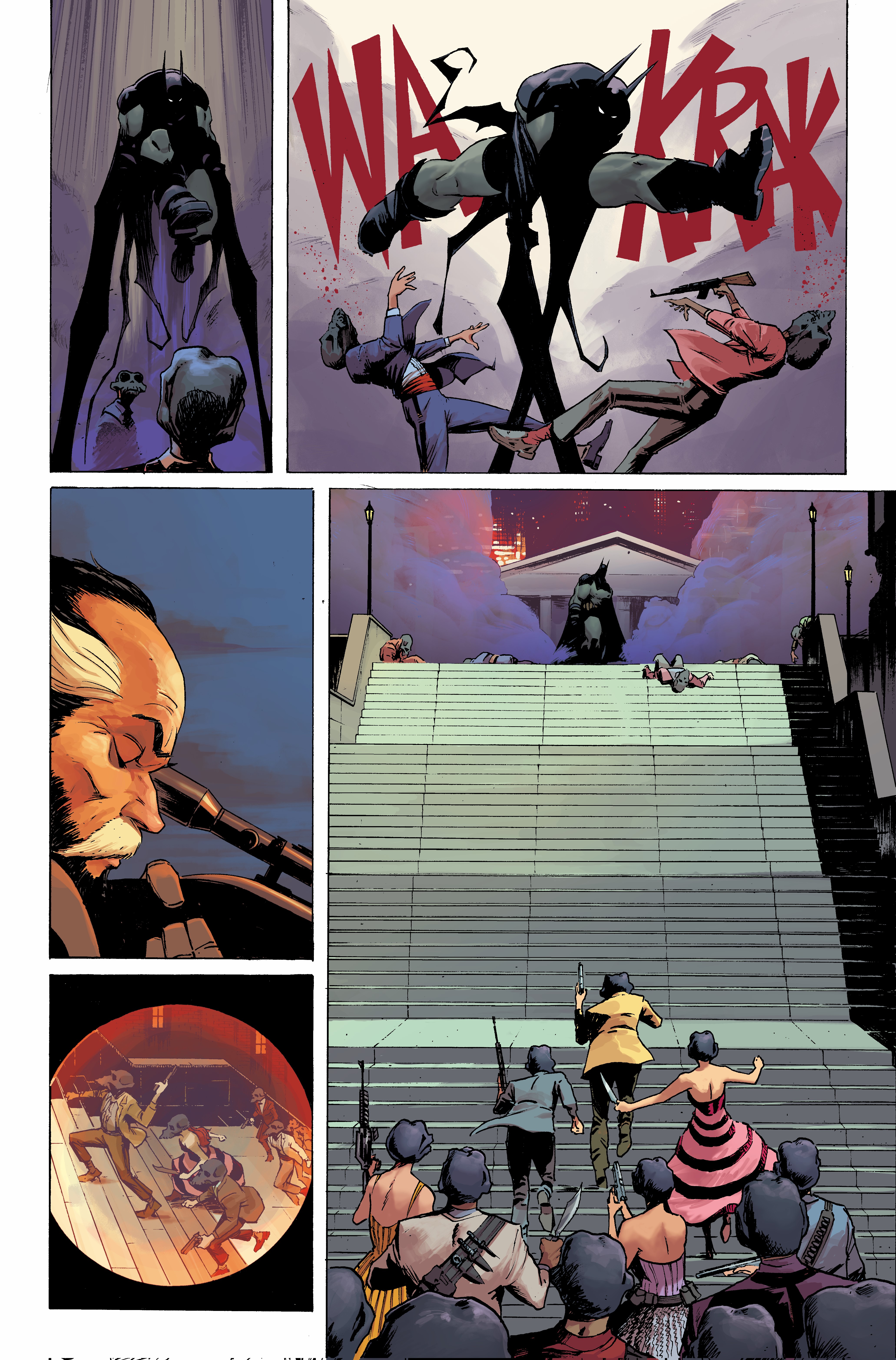
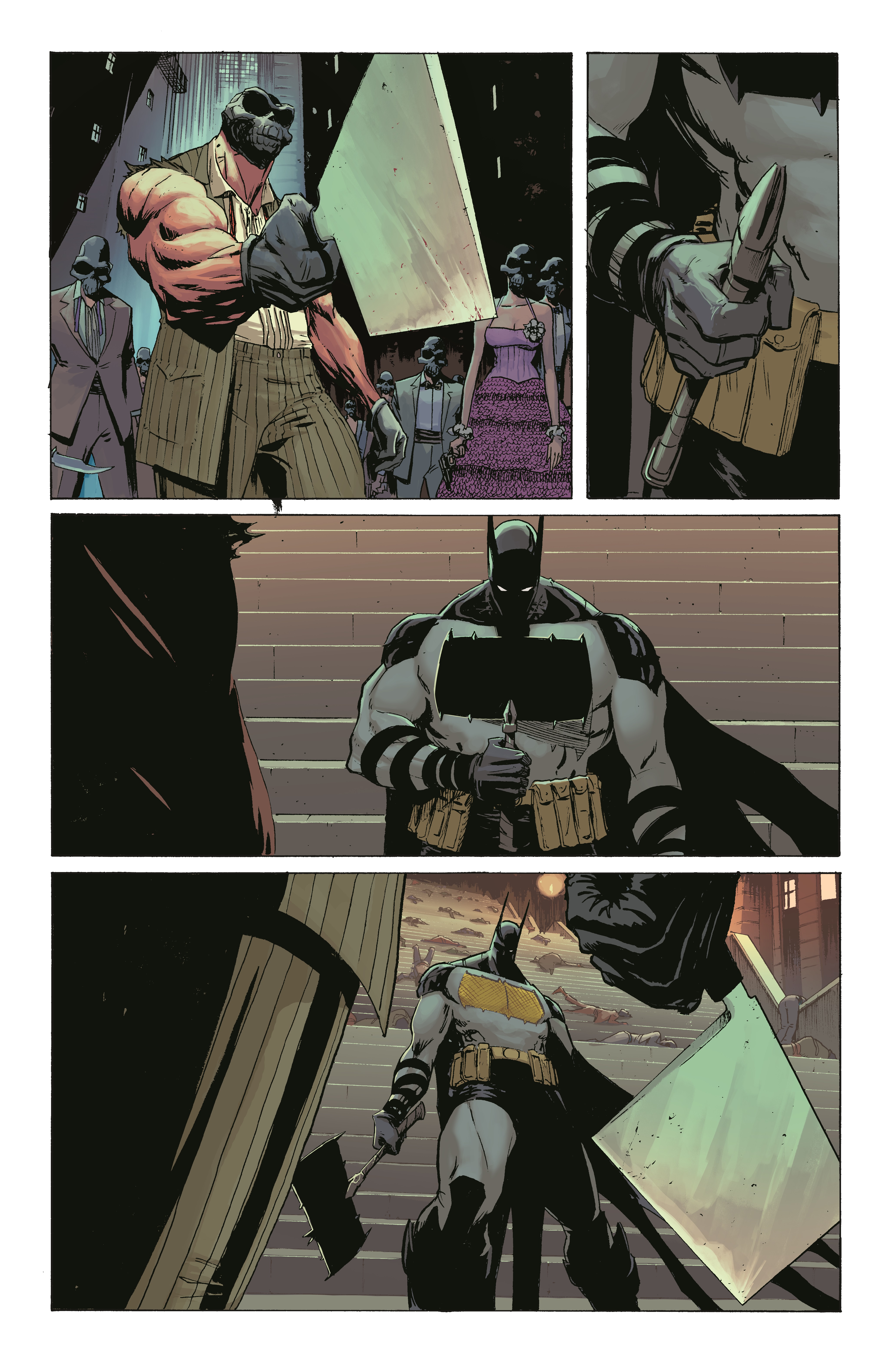
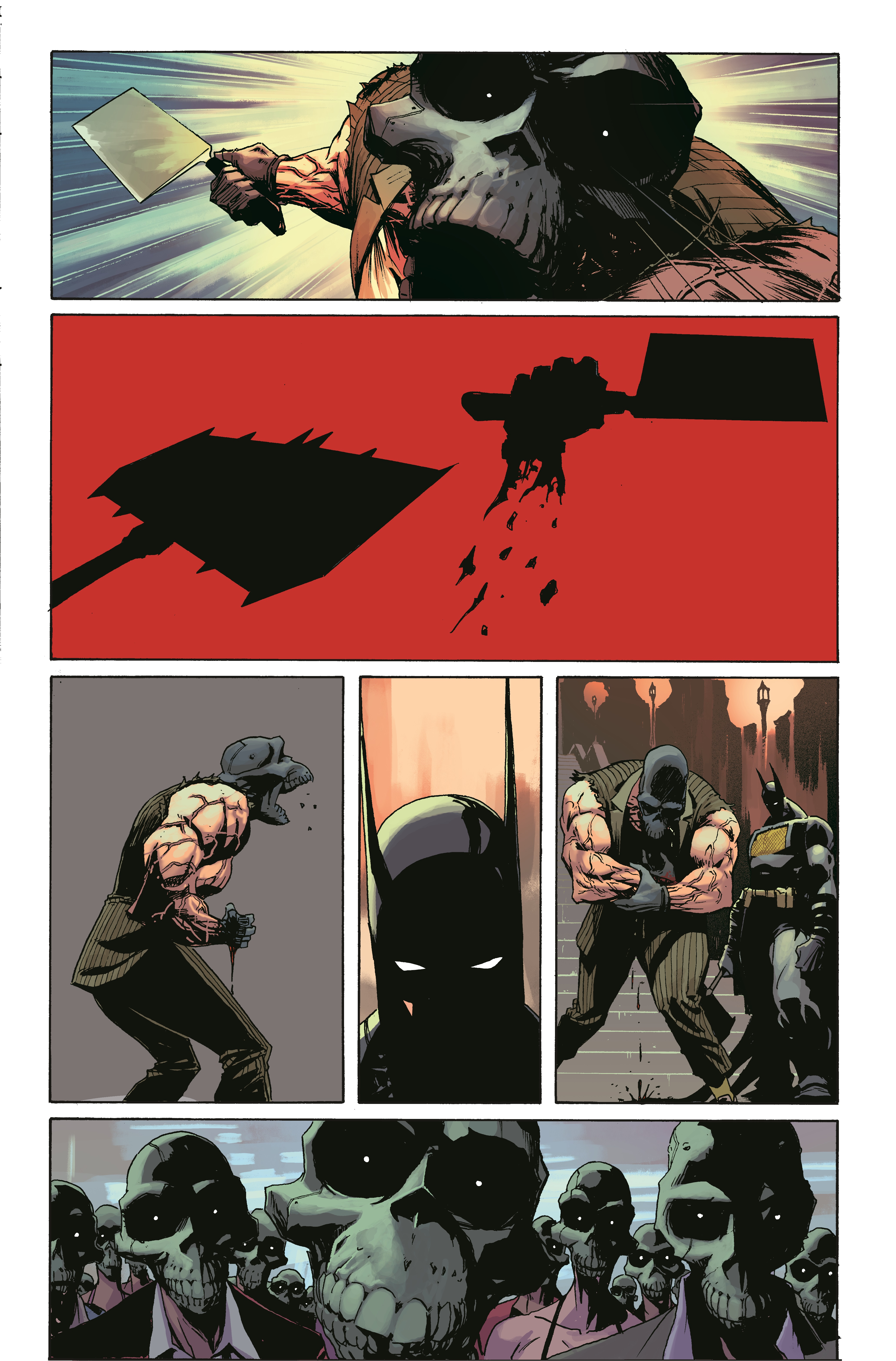
Scott, you've done punk rock Gotham and post-apocalyptic Gotham. Nick, you're fresh off drawing Metropolis, which is the shining opposite of Gotham. How did you want to build this Gotham for the Absolute Universe?
Dragotta: Visually, for me, I'm going blocky like our Bruce. Our Gotham probably more resembles Chicago, but I'm going geometric, graphic, and bold. It's blocky, built on solid perspective, and it's lit. You just speckle it with light. It's drawing a city in the flavor of comics, maybe going towards more Kirby-esque with a lot more black.
Snyder: For me, the Absolute Universe itself is trying to challenge the heroes and make them underdogs. Every hero is started in a way that applies more adversity to them. For Wonder Woman, she isn't raised on Paradise Island and the Amazons have a different role in the world – she's raised in Hell for reasons that you'll learn later. Superman, similarly, doesn't grow up in Smallville, as Jason Aaron has revealed. He has a more difficult childhood than Clark in the main universe.
The idea was to create a world where these heroes feel like they have to burn brighter, be tougher, think about how to be more resourceful. Gotham has to be a city of extremes. It's a colder and prettier city. The gargoyles are overshadowed. It's like New York. I'm from New York City and, if you go there right now, there are all these beautiful glass towers, half of which are empty in the top ten floors because they're all owned by companies or oligarchs that don't use them; they're just investments. It's a city that feels hollowed-out. Its people are amazing, but it doesn't feel public, collective, and dense like it did before. That's the Gotham that Nick captures so beautifully. He does it so subtly too. There'll be a Lamborghini dealership and a tent city, but it's all in the background, so it's not in your face.
Alfred really addresses it in the first pages where he doesn't really get into it in any specific way, but he's like "You're missing your heart. Something's wrong with you, Gotham. I haven't been here for a long time but there's something different. There's something cold and vapid about it." It's meaner than the Gotham I wrote before.
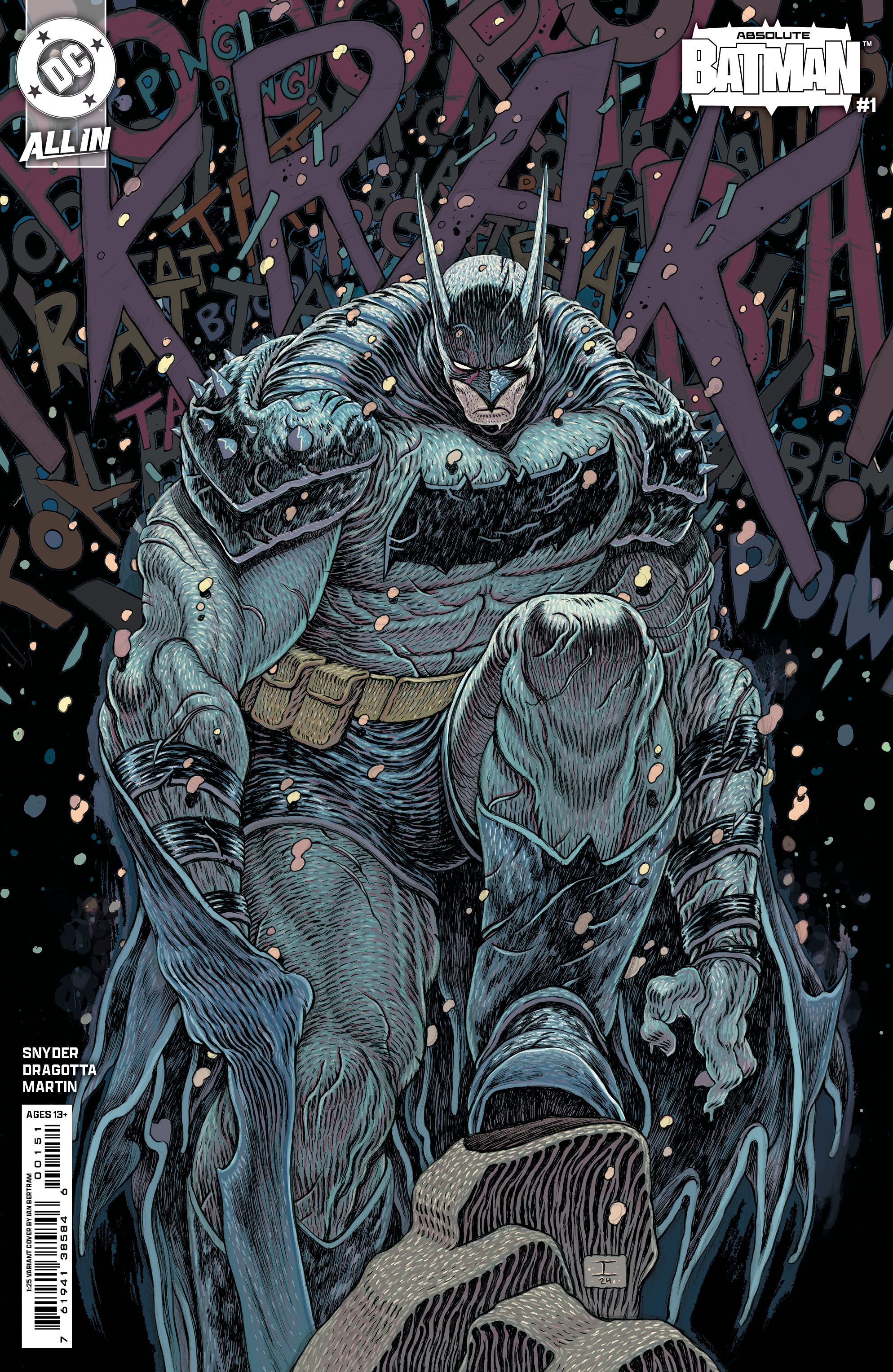
Batman has the best rogues' gallery of villains. How did you want to build the Absolute universe rogues' gallery to challenge this version of Batman?
Snyder: What we wanted was to really think about it from that core conceit to build out what if Batman was this anarchic, chaotic figure that really believes he can change this giant, systemic machine.
It is about how does one man change something that feels unchangeable. It isn't about going up against the Riddler, Penguin, or Killer Croc in traditional ways. It's recasting them so that they play a different role for him. You'll see them all referenced and mentioned in the first issue, you'll see Selina get referenced in the first issue. You'll quickly get a sense of what we're going for. We really wanted to create a new dynamic between Bruce and the classic rogues, so that the people we're bringing in for him to really fight offer this looming challenge you haven't seen him go up against before.
A lot of the first arc is about Bruce fighting what he thinks is a lopsided fight against him and coming to realize that it's globally lopsided against him. There are so many resources behind the people that he's up against that he's like an insect. Is he still going to continue when he knows that's the case and the people he cares about could be hurt? It's been a really fun creative engine, flipping this all on its head. Everything feels fresh and new, everything feels renewed and vibrant.
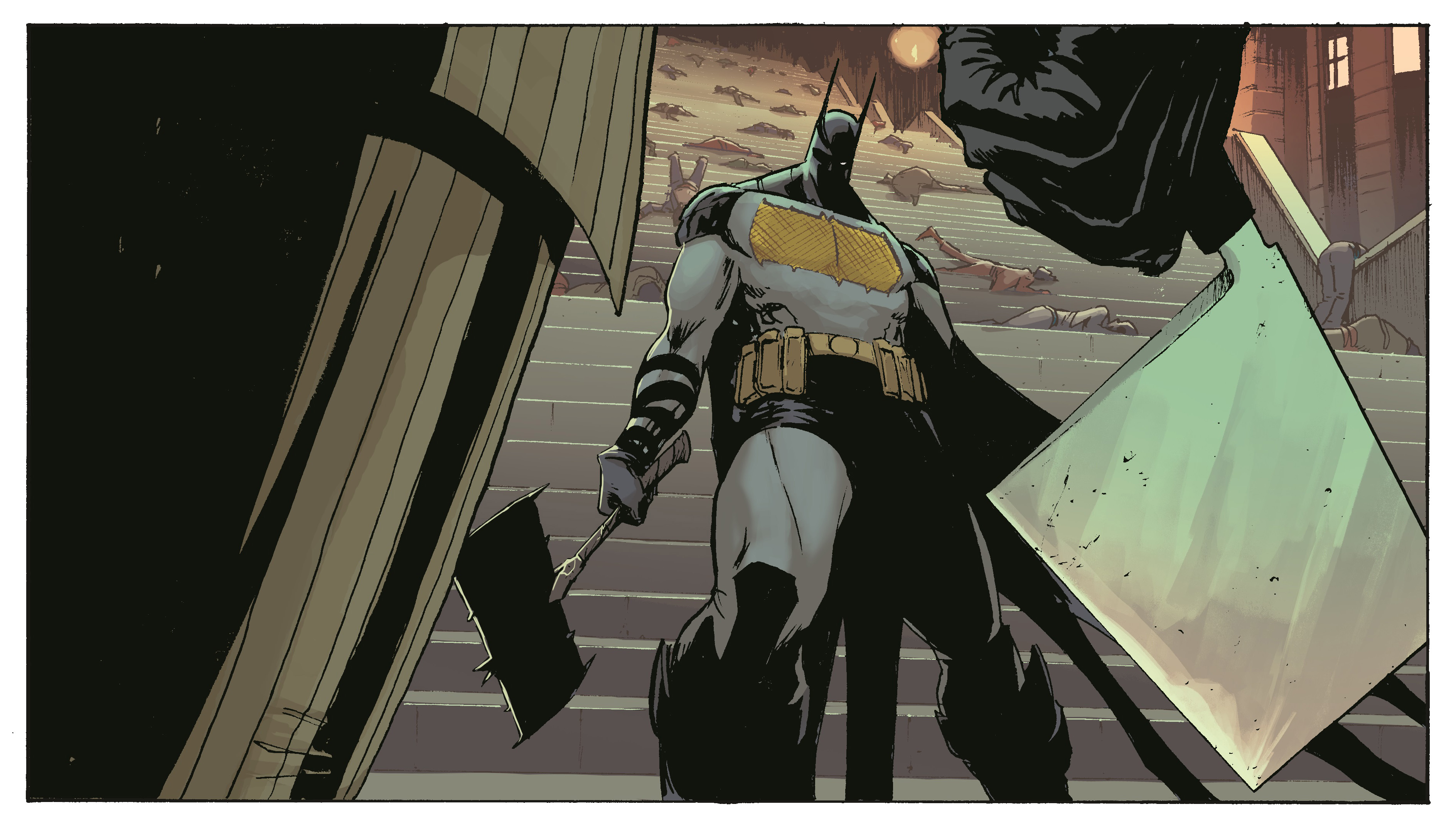
How has it been working together to build this corner of the Absolute Universe?
Dragotta: It's been awesome! The word "collaborative" probably gets overused, but this might be the most collaborative relationship I've ever had with a writer. We've been doing this for quite a while, building this Gotham, this Batman, and the cast. There's an emotional core to this story that I really want to capture. For me, the storytelling is trumping all and it's just trying to capture these ideas that Scott has. I'll do a drawing that'll lead to whole new storyline ideas. You talk about the villains and the villains might become the stars of the book. These relationships and the way that they're going to bud and grow out, I just can't wait to draw it. It's rad and it's been very collaborative.
Snyder: We've become really good friends. Nick was the first person that I thought of for this. When I was hired by DC to help guide All In and Absolute, along with Joshua Williamson, my feeling was I didn't care which book I got. I was thinking I'd do a Detective Chimp or Darkseid book, I didn't know. When the Absolute line started to fill up and Batman was still unmanned, that idea of Batman as chaos and the villains as the system was the pitch I used to talk to people about the Absolute Universe's ethos. It was James Tynion who called me up and he was like "You know what to do. You've got to write it." I was like "I can't do Batman again." He was like "You're going around telling everybody to take their biggest swing on that and you know that's the one you want. You should do it."
I said to him "If I did, I would want somebody who would bring a whole new flavor, dynamism, grittiness, and marry that David Mazzuchelli grounded, inky art with that fresh, almost manga-influenced kinetic feel. I'm really thinking about Nick."
So I called Nick, later in the day, thinking "If he says 'no,' I have an excuse not to do it." I remember I was pitching him and he went "Please tell me you're thinking about Batman," and, when he said "yes," now we were in.
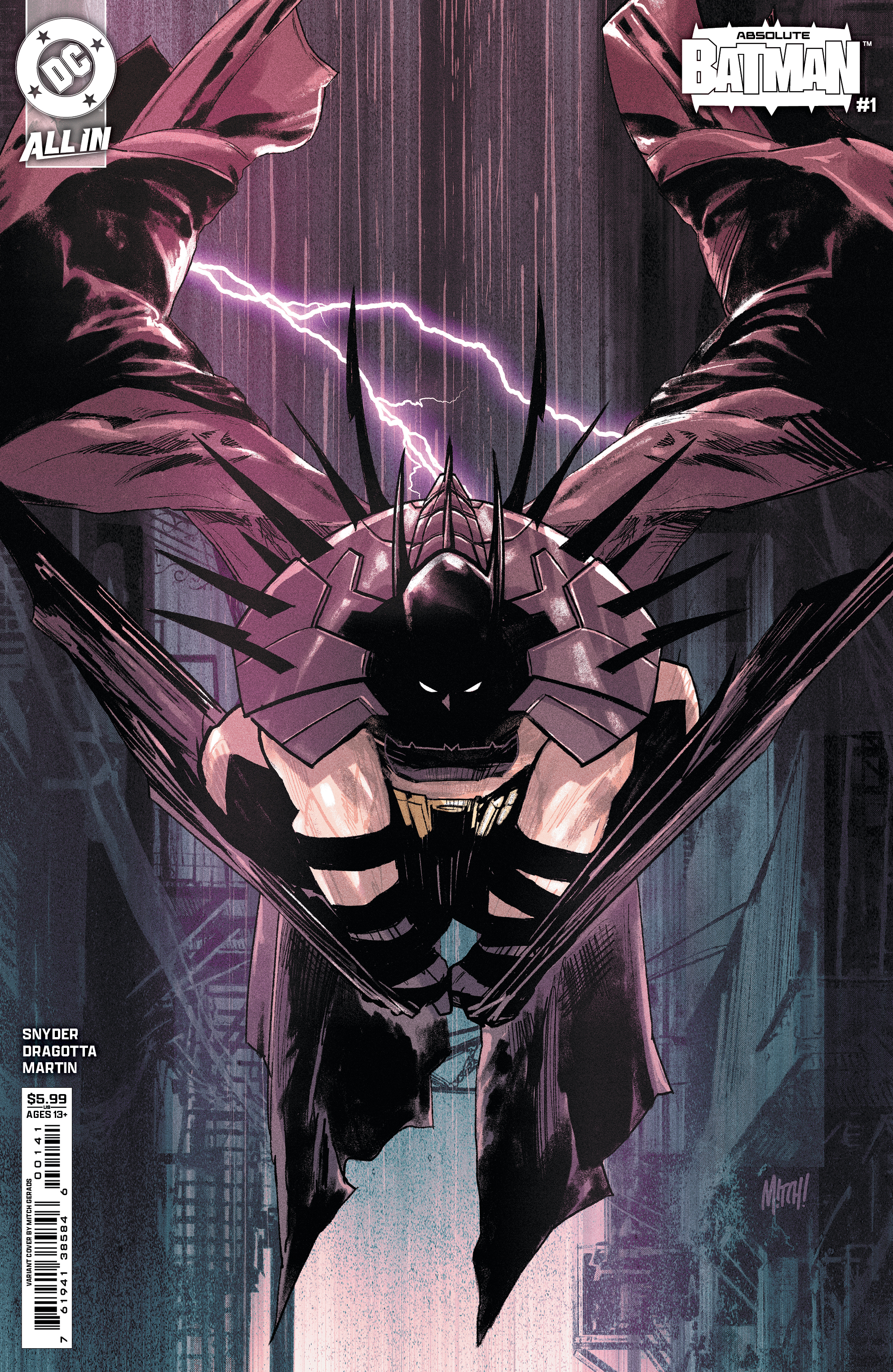
How does it feel returning to Batman all this time later?
Snyder: The beauty of this book is, when I was on Batman, I was hanging on for dear life because I got hired really quickly out of the blue and it was like being fired out of a cannon, going from Detective Comics to Batman. I was brand-new, so I was always trying to cling to what was going on and survive it. This time, we really had time to think about the book, plan it, design it, design the characters, and think about what we're saying in each issue.
I've never been more confident going into a superhero book. I feel so good about it, so proud of it, so grateful to Nick as a partner, and to DC for letting us do it. It's a really bold book. It takes some really big risks and I'm very proud of that and being a part of that. To be able to go in feeling like I love it unequivocally is a great feeling. Of course, you care what people think and, if people hated it, it would hurt.
But in a more realistic way, you don't care about what anybody thinks when you love a book as much as we love this book. I do through and through love this book, the characters, the way the book looks, Nick's art, and I love working on it. I feel so relaxed and confident about it that I can't wait for people to see it.

Scott, you've mentioned the approach of writing something like Batman like you would a creator-owned book and this feels like the most creator-owned take on an established property you've ever done. How do you want this Batman to reflect your fears about the world today?
Snyder: When you open it and read it, from page one, I think it'll be evident. It's a Batman that is designed to make my kids brave in the face of the things that I think they're up against in the way that DKR and that stuff addressed, in comic book terms, not explicit terms, the stuff that was in the zeitgeist when I was a kid in the '80s.
It's designed to go straight at things that, to me, are the biggest fears that I have in the world for my kids, but do it in a way that's bombastic, fun, and over-the-top in terms of their portrayal. It's making big fun comic lunacy, but you still speak from the heart as much as you can about the things that really keep you up at night. I don't think you'll read it and think that this feels like anything that I've been a part of. It really feels new to me and I feel refreshed and excited.
Dragotta: Let's give a shoutout to Frank Martin, Jr., our colorist. I almost think of Frank as the finisher on this art, he brings so much to it, so much atmosphere. To Clayton Cowles, our letterer, and Katie Kubert, our editor. And to Scott, who had this massive idea years ago, and now, everyone gets to see it. It's pretty bold and really exciting to be a part of it.
Snyder: The whole point of All In is to invite everybody in to remember, enjoy, and celebrate how awesome superhero comics are across the board, to offer you new takes on the characters in the Absolute Universe, awesome and epic stories in the classic universe, and be able to create the biggest jumping-on point that we've had in many years. The fact that fans seem so excited about so many different titles means the world to us. I hope you'll enjoy it, come in, buy in, and be a part of it because it really is a labor of love. It's done as a thank-you to all fans and retailers for being so awesome to us.
Absolute Batman #1 is published by DC on October 9.
Keep track of all the new Batman comics and collections headed your way.
Sam is a freelance writer contributing to GamesRadar+. Sam has been working in entertainment journalism since 2016 for outlets including CBR, Popverse, /Film, and more, conducting interviews and writing reviews and columns covering comic books, television, film, and video games. With an expertise spanning the breadth of pop culture, Sam is especially knowledgeable on Star Trek, Nintendo, and DC Comics. In his free time, Sam likes to play guitar poorly and travel around the world.


